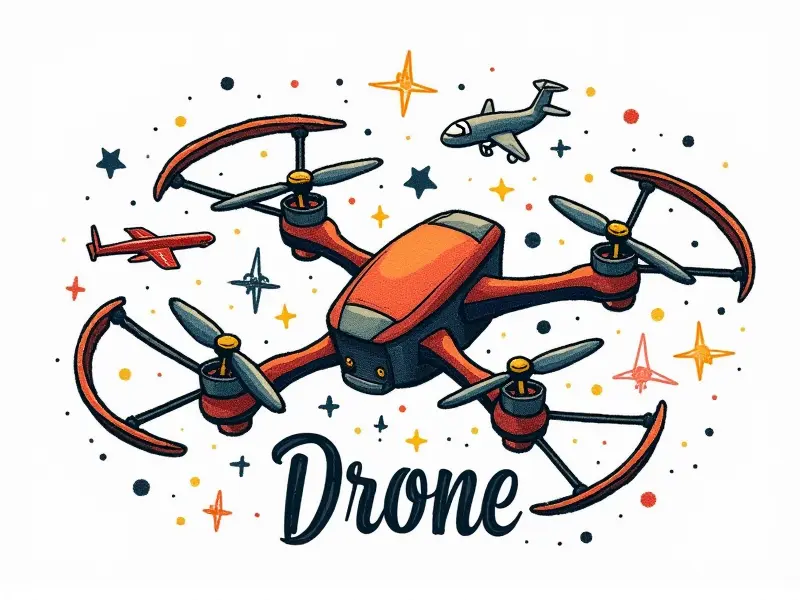What is drone autopilot?

Benefits of Drone Autopilot Technology
Drone autopilot technology offers a myriad of benefits that enhance the efficiency and safety of drone operations. One of the primary advantages is increased precision, allowing drones to perform tasks with pinpoint accuracy. This is particularly beneficial in industries such as agriculture, where drones can survey large fields for crop health monitoring.
Enhanced Safety
The use of autopilot systems significantly reduces the risk of accidents caused by human error. By automating critical flight operations, drones can navigate complex environments without putting pilots at risk. This is especially important in hazardous conditions like extreme weather or high-altitude flights.
Cost Efficiency
Autopilot technology also leads to cost savings through reduced labor and operational expenses. Automated systems minimize the need for extensive training, allowing operators to manage multiple drones simultaneously without compromising performance.
Understanding Drone Autopilot Systems
A drone autopilot system is a sophisticated software and hardware combination designed to control unmanned aerial vehicles (UAVs) autonomously. These systems integrate GPS navigation, flight planning algorithms, and real-time data processing capabilities to ensure smooth and reliable operation.
Key Components of Drone Autopilot
- GPS Module: Provides precise location data for accurate positioning.
- Inertial Measurement Unit (IMU): Measures acceleration, orientation, and rotational velocity to maintain stability.
- Flight Control Software: Manages all flight parameters and executes pre-programmed missions.
Top Features in Drone Autopilot
The most advanced drone autopilot systems come equipped with a range of features designed to optimize performance and functionality. Some key highlights include:
Mission Planning Tools
These tools enable users to create detailed flight paths, set waypoints, and define mission objectives before takeoff.
Real-Time Monitoring
Autopilot systems provide continuous updates on drone status, including battery levels, altitude, speed, and more.
Collision Avoidance
Advanced sensors and algorithms detect obstacles in real-time to prevent collisions and ensure safe flight paths.
Beginner's Guide to Drone Autopilot
For those new to drone autopilot technology, understanding the basics is crucial. Here’s a step-by-step guide to get you started:
Selecting an Appropriate System
Choose a system that aligns with your specific needs and budget. Consider factors like ease of use, compatibility with your drone model, and additional features.
Setting Up the Autopilot Software
Familiarize yourself with the software interface and follow installation instructions carefully to ensure proper setup.
Configuring Flight Parameters
Tailor flight settings such as altitude limits, speed controls, and camera angles according to your mission requirements.
Exploring Drone Autopilot Capabilities
The capabilities of drone autopilot systems are vast and varied. From basic waypoint navigation to complex multi-drone coordination, these systems offer a wide array of functionalities:
Waypoint Navigation
Drone can follow predefined routes with precision, ideal for mapping large areas or inspecting infrastructure.
Mission Customization
Users can create customized missions tailored to specific tasks like aerial photography, surveying, and delivery services.
Essential Tips for Using Drone Autopilot
To maximize the benefits of drone autopilot technology, consider these essential tips:
Regular Maintenance Checks
Perform routine maintenance to ensure all components are functioning correctly and to extend system lifespan.
Data Analysis
Leverage collected data for informed decision-making in areas like crop management or construction site monitoring.
How Autonomous is Your Drone?
The level of autonomy in a drone autopilot system varies based on its capabilities. Some systems offer basic automation, while others provide full autonomous operation:
Semi-Autonomous
In semi-autonomous mode, the pilot retains control over critical functions but can delegate routine tasks to the autopilot.
Full Autonomy
A fully autonomous system allows drones to operate independently without human intervention, ideal for remote or dangerous environments.
The Basics of Drone Autopilot Systems
To understand how drone autopilot systems work, it’s essential to grasp the fundamental principles:
Flight Control Algorithms
These algorithms process sensor data and adjust flight parameters in real-time to maintain stability and achieve mission objectives.
Data Transmission Protocols
Effective communication between drone components is crucial for seamless operation, utilizing protocols like MAVLink or UTM (Unmanned Traffic Management).
Choosing the Right Drone Autopilot
Selecting the appropriate autopilot system depends on your specific requirements and operational context:
Consider Your Industry Needs
Different industries have unique demands. For instance, agriculture may prioritize crop monitoring features, while construction focuses on site inspection.
Evaluate System Compatibility
Ensure the autopilot system is compatible with your drone model and integrates well with existing hardware and software infrastructure.
Advanced Drone Autopilot Capabilities
The latest advancements in drone technology push the boundaries of what’s possible:
Multidrone Coordination
Sophisticated systems enable multiple drones to work together seamlessly, enhancing efficiency and coverage in large-scale operations.
AI Integration
Artificial intelligence enhances decision-making processes, allowing drones to adapt dynamically to changing conditions.
Best Practices for Drone Autopilot
To achieve optimal performance with drone autopilot systems, adhere to these best practices:
Continuous Training and Education
Stay updated on the latest developments in drone technology through regular training sessions and workshops.
Compliance with Regulations
Familiarize yourself with local regulations governing drone operations to ensure legal compliance and safe usage.
Conclusion
The integration of autopilot systems into drones has revolutionized the way we utilize unmanned aerial vehicles across various industries. From enhancing safety and efficiency to enabling complex mission capabilities, these technologies offer unparalleled benefits. By understanding the basics, exploring advanced features, and adhering to best practices, operators can fully leverage the potential of drone autopilot technology.

